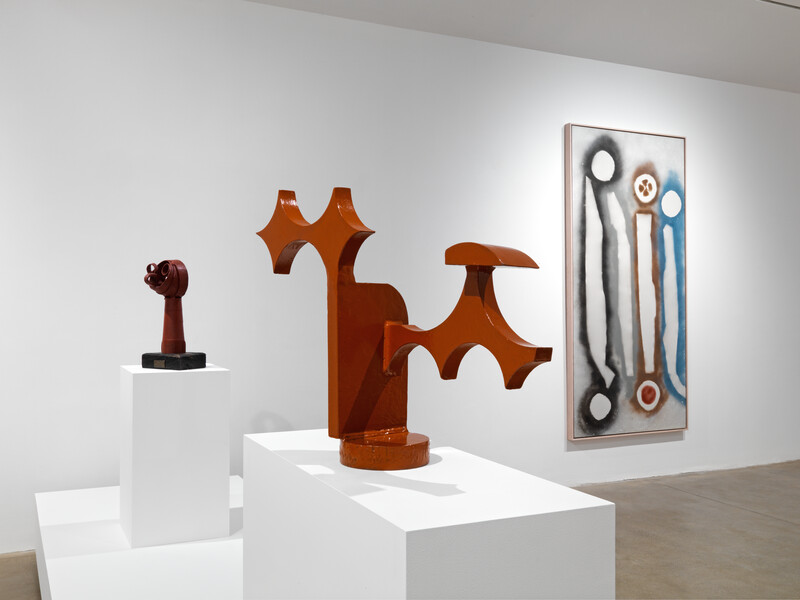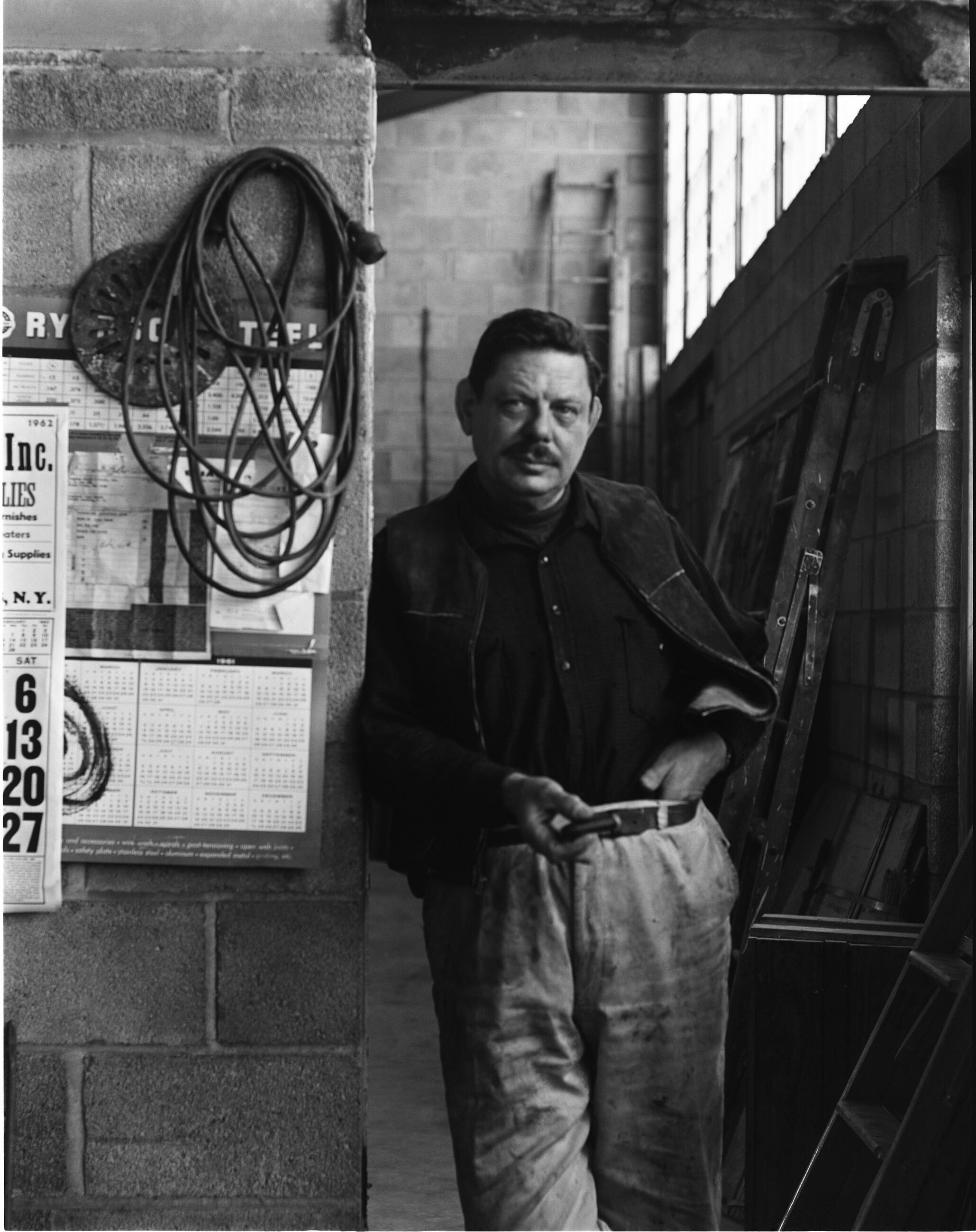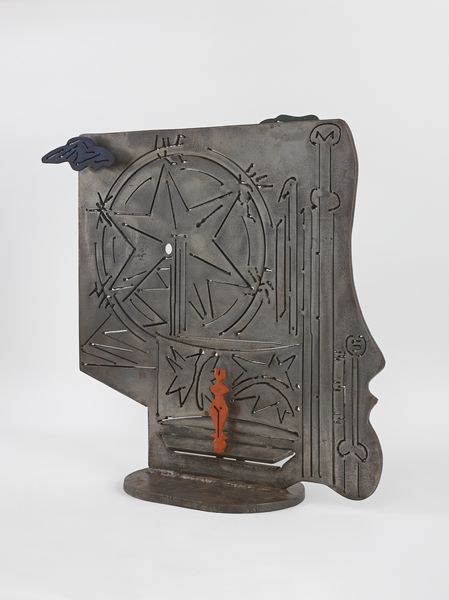
David Smith
Field Work
28 September - 5 January 2020
Somerset
Hauser & Wirth Somerset is pleased to announce ‘David Smith. Field Work’, its debut solo exhibition by the eminent American artist. The exhibition has been conceived as four chapters of work spanning over three decades (from 1933 to 1964) that aim to demonstrate Smith’s diverse visual language and multifaceted creative process. Curated by the artist’s daughters Rebecca and Candida Smith, co-presidents of the David Smith Estate, the exhibition situates itself between the drawn image and sculpted form to investigate the relationship between the two parallel practices. For Smith, drawing was a natural form of expression, often produced alongside sculpture making and he would intuitively switch back and forth as a crucible for thought and innovation.
‘We are thrilled to see our late father’s work in Somerset, the rural setting is reminiscent of the rolling hay fields around his studio. He wanted his sculptures to be experienced in nature, in changing light, weather and seasons. In the morning he walked down the driveway to the ‘shop’ which is what he called his studio; at night he worked on drawings in the house. From our bedroom my sister and I would hear the particular rattle of his spray cans as he made drawings to jazz records. I see in these works a great sense of what I knew of my father - his love of making and constructing form’—Rebecca Smith, June 2019
Included in the exhibition is a selection of works from the artist’s Agricola series made during the early 1950s. Smith found a great fascination in the aesthetics of the land, of tractor parts, agricultural equipment and the relationship between mankind and the earth. He challenged sculptural conventions and was the first artist in America to work with welded metal, becoming known for his mastery of steel. These joyous almost folkloric forms were imbued with childhood memories growing up in the Midwest and his artistic life later in Bolton Landing, NY, USA.
‘Our father made sculpture in the rural mountain town of Bolton Landing, NY where he installed his largest work within the landscape. Neighbours brought him old tools and farm equipment that they found hidden in old barns or under the dirt for my father. A tractor seat might become a pelvis or cogs become eyes. This interplay can be monumental in feeling. He left Brooklyn for Bolton Landing in part because his identity as an artist required the open space to inhabit and express itself. We hope that visitors can identify with this love of space to think.’ Candida Smith, June 2019
During the late 1950s Smith employed bronze relief to further push out the picture plane into the third dimension. He built a topology of animal bones, carved wood and stones to create a scene that was then cast in bronze. The tablets become pictorial, as if modern day hieroglyphics of past events held in stasis. Often titled in reference to their material origins – ‘Bone Up’ (1956 - 57), ‘Skull and Tree’, (1956 - 57) – these works shared themes of conflict, war and protest, as if commemorating the moments between life and death. Inspired by Sumerian seals and Greek coins, the reliefs suggest undefined crowds of figures, groupings that march against the sky, predicting the lines of sculptures that would later parade in the open landscape.
Smith’s most significant contribution to art history is often cited as his ability to draw in space – that is, to redefine the role of sculpture as an all-round, 360-degree experience, where the drawn line is now held in three dimensions. The viewer circumnavigates the object as if a pre-cursor to virtual reality, where we can now walk within the pyramids of Egypt without leaving our sofa. As seen in ‘Steel Drawing II’ (1945), Smith’s fascination with ideas of the night sky and mapmaking can be seen in the cuts he makes into the plane of metal. Drawing on notions of brain activity, we can see a stylised interpretation of notations of thought.
Drawn at the scale of his body, a further set of drawings take on ‘physical mentations’ of motion, dance and jazz. He was influenced by the Zen writings of John Cage and the improvisation of contemporary dance, creating at speed and with a compulsion to construct raw forms in response to sensory experience and vast geological forces.
Painting and drawing remained integral to Smith’s creative output throughout his career. Smith would construct and weld piece-by-piece, building his sculptural forms step-by-step. As the sparks from the welding torch flew across the studio and across the piece awaiting their turn, Smith saw the ghost of these parts in the burnt studio floor and saw potential. With the advent of the aerosol in the mid-1950s Smith found an industrial technique for applying paint that he could make his own. As his awareness grew, so did the composition of his spray paintings and spray drawings, incorporating form in colour. For Smith the two mediums were conceptually continuous and evolving.
Contrary to the zeitgeist of the time Smith saw colour and paint as intrinsic to how his sculpture should be understood. Where sculpture was seen as the new high priest of honesty to materiality, Smith gave gestural brush strokes of paint to industrial forms and figurative monuments to a new sense of radicalism. This can be seen in the found objects used to construct ‘Untitled’, (1958 - 59), daubed in bold pinks and pretty yellows the agricultural materials become almost childlike forms of fun. Latterly in ‘Rebecca Circle’, (1961) which stands like a seven feet tall sunflower, a monument to fatherhood painted in blocks of bold primary colour.
Installation views















1 / 6
Related Content
About the Artist

David Smith
David Smith is regarded as one of the most innovative artists and important American sculptors of the 20th century. He transformed sculpture by rejecting the traditional methods of carving and casting in favor of torch-cutting and welding, becoming the first artist known to make welded sculpture in America. These methods allowed him to work in an improvisational manner in creating open and large-scale, abstract sculptures. In his later years, he installed his sculptures in the fields of his home in the Adirondack Mountains, where a dialogue between the art object and nature emerged as central to his practice. His sculpture-filled landscape inspired Storm King Art Center and other sculpture parks throughout the world, as well as anticipating the land and environmental art movements.
Smith was born in 1906 in Decatur, Indiana. He worked briefly as a welder in an automobile factory before moving to New York City to become an artist in 1926. He studied painting at the Art Students league, where Cubism and Surrealism were foundational to his practice. He began welding sculpture around 1933 after seeing reproductions of constructed steel sculptures by Pablo Picasso and Julio González. He later became associated with the abstract expressionist movement and paved the way for minimalism with radically simplified, geometric works. Painting and drawing remained integral to what Smith called his ’work stream’. He embraced a holistic attitude toward artmaking and dismissed the idea of a separation between mediums. Acknowledging the tradition of painted sculpture throughout art history and drawing from the bold palettes of modernism and pop culture, Smith often painted his sculptures. David Smith died in 1965, leaving behind an expansive, complex, and powerful body of work that continues to exert influence upon subsequent generations of artists.
Smith began exhibiting his work as early as 1930. His first survey was organized by the Museum of Modern Art, New York in 1957. His sculpture was represented by the United States at the São Paulo Biennale in 1951 and at the Venice Biennale in 1954 and 1958. Posthumous retrospectives have been held at the Solomon R. Guggenheim Museum (1979 and 2006, which traveled to Tate Modern, London and the Centre Pompidou, Paris) and at the Los Angeles County Museum of Art (2011, which traveled to the Whitney Museum of American Art, New York and the Wexner Center for the Arts, Columbus, Ohio). Other major surveys have been organized at the Sezon Museum of Art, Tokyo (1994, traveled throughout Japan), the Museo Nacional Centro de Arte Reina Sofía, Madrid (1996), Storm King Art Center (1997–99), and Yorkshire Sculpture Park, Wakefield, UK. A three-volume, fully illustrated catalogue raisonné of Smith’s sculpture was published in 2021 by the Estate of David Smith and distributed by Yale University Press. A biography by Michael Brenson, David Smith: The Art and Life of a Transformational Sculptor, was published by Farrar, Straus, and Giroux in 2022.
Current Exhibitions
1 / 12















